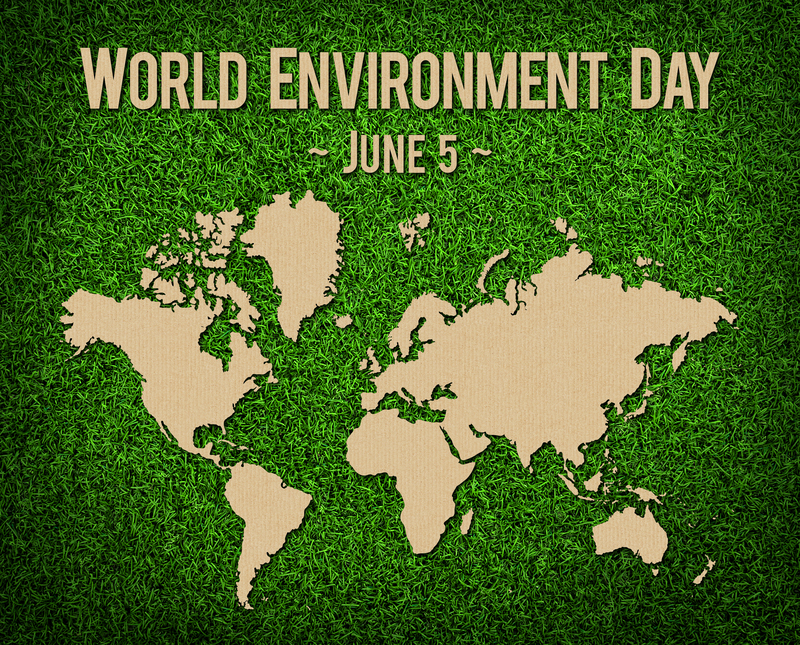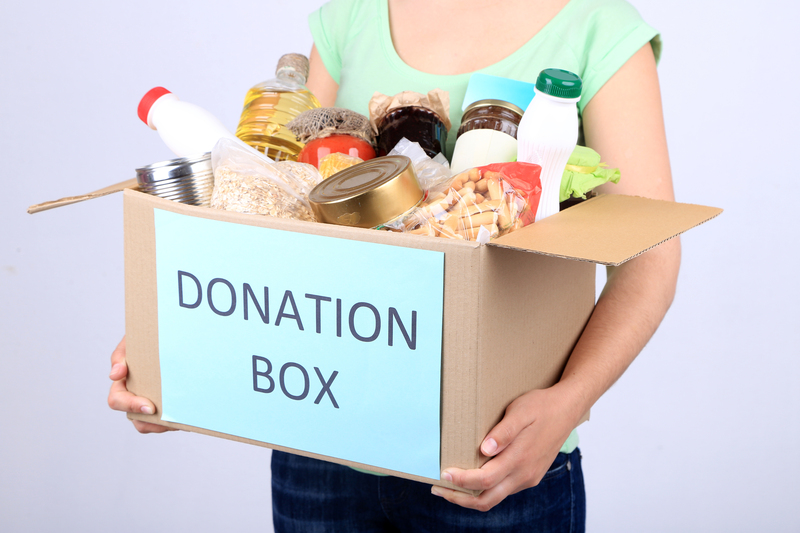Optimize Home Recycling With These Practical Tips
Home recycling optimization doesn't have to be difficult or time-consuming. By making a few strategic changes and learning effective techniques, you can streamline your home recycling efforts, reduce waste, and contribute to a healthier environment. In this comprehensive guide, you'll discover actionable steps to improve home recycling, practical tips for better waste management, and ways to make sustainable living a natural part of your daily routine.
Why Is Home Recycling Important?
Recycling is more than just a trend—it's essential for both current and future generations. When you optimize household recycling practices, you:
- Conserve natural resources, such as water, minerals, and timber.
- Reduce landfill waste and pollution.
- Save energy during manufacturing processes.
- Protect ecosystems by lowering greenhouse gas emissions.
- Encourage a circular economy, where materials are reused and repurposed.
Now, let's delve into effective strategies and step-by-step processes to optimize your home recycling system and make a positive environmental impact.

Set Up a Streamlined Home Recycling System
1. Assess Your Household Waste
Begin by identifying the types and amounts of waste your home generates. Track your family's trash for a week to pinpoint common recyclable items, such as:
- Papers (newspapers, magazines, cardboard)
- Plastics (bottles, containers, packaging)
- Glass (jars, bottles)
- Metals (cans, tins, foil)
- Organic waste (food scraps, coffee grounds)
Knowing your waste stream helps target your recycling efforts for maximum efficiency.
2. Create a Recycling Station
Designate a convenient area in your kitchen, garage, or utility room to centralize all recycling. Organize with clearly labeled bins for different materials:
- Papers
- Plastics
- Glass
- Metals
- Compostables
Color-coding your bins can help kids and guests recycle correctly and reduce contamination of recyclables.
3. Learn Local Recycling Guidelines
Each municipality or waste management company has specific rules about what can and can't be recycled. Check your town or city's website for an up-to-date recycling chart or download a recycling app to double-check unfamiliar items.
Key tips:
- Some plastics are non-recyclable (e.g., plastic bags, film, or polystyrene) in curbside bins.
- Rinse out food containers to avoid attracting pests and to keep recycling loads clean.
- Check if caps, labels, or special packaging materials need to be removed before recycling.
Practical Home Recycling Tips for Everyday Life
1. Reduce First, Then Recycle
While recycling is essential, reducing waste at its source will always be the most effective strategy. Practice the "three Rs" in order:
- Reduce: Buy items with minimal packaging, choose reusable containers, and avoid single-use products.
- Reuse: Find creative ways to repurpose glass jars, plastic tubs, and cardboard boxes for storage or crafts.
- Recycle: Discard only what can no longer be reused, ensuring correct sorting and cleaning.
Every small step toward waste reduction counts for both your household and the planet.
2. Flatten and Break Down Recyclables
Maximize space in your recycling bins by flattening cardboard boxes and crushing cans or plastic bottles. This makes collection easier, allows for more material in each pickup, and reduces greenhouse gas emissions from collection vehicles making multiple trips.
3. Tackle Hazardous & E-Waste Properly
Not all household items belong in curbside recycling. Properly dispose of chemicals and electronics:
- Take batteries, fluorescent bulbs, paints, and cleaners to a hazardous waste facility.
- Recycle electronics (computers, phones, TVs) at authorized e-waste centers.
- Never pour chemicals down the drain or into the trash.
Look for local hazardous waste collection days or drop-off locations nearby.
Making Home Recycling a Family Habit
1. Educate and Involve All Family Members
Creating a culture of sustainable recycling at home works best when everyone participates:
- Teach children what items go in which bin—make it a game or a quiz for younger kids.
- Put easy-to-understand signs or stickers on bins to remind everyone of the recycling rules.
- Rotate responsibility for taking out recycling to make it a shared task.
2. Reward Progress
Celebrate your achievements, such as weeks with less landfill waste or successful sorting. Set family recycling challenges, such as reducing single-use plastics or minimizing contamination, and reward the winner with a fun activity or treat. This keeps recycling at home engaging and rewarding for all ages.
Advanced Ways to Boost Your Home Recycling System
1. Compost Your Organic Waste
Setting up a home compost bin diverts food scraps and yard waste from the landfill and produces nutrient-rich soil for gardens or houseplants. Compostable items include:
- Fruit and vegetable peels
- Coffee grounds and filters
- Eggshells
- Yard clippings and leaves
- Shredded paper (uncoated)
If you don’t have a backyard, consider compact indoor composters or community compost programs.
2. Shop for Products with Recycled Content
Close the recycling loop by supporting brands and items made from post-consumer recycled materials. Look for labels such as “Made from Recycled Plastic” or “100% Recycled Paper” when shopping for paper goods, bags, or clothing. Your purchasing power helps grow the market for recycled materials.
3. Donate or Reuse Large Items
Before sending bulky items like furniture, appliances, or toys to the curb, explore ways to give them a new life:
- Donate to local charities or thrift stores.
- Offer items for free or sale on online marketplaces.
- Organize a neighborhood swap event.
Reducing landfill waste can be as simple as finding a grateful new owner for something you no longer need.
Common Recycling Mistakes to Avoid (And How to Fix Them)
- Wish-Cycling: Placing non-recyclable items in the bin hoping they'll be recycled. Solution: Learn your curbside program's rules and stick to them.
- Dirty Recyclables: Dumping greasy pizza boxes, food-covered jars, or sticky bottles can contaminate an entire batch. Solution: Quickly rinse and air-dry recyclables before tossing.
- Bagged Recyclables: Most recycling programs do not accept recyclables in plastic bags as they jam sorting machinery. Solution: Empty recyclables directly into the bin.
- Tanglers: Stringy items like hoses, cords, or plastic bags can tangle machinery at recycling facilities. Solution: Find specialized drop-off sites for these items.
- Ignoring E-Waste: Old electronics release toxins if landfilled. Solution: Take them to certified e-waste recyclers.
Small improvements add up over time—learning from these common missteps will help you optimize recycling efforts at home even more.
Leverage Technology to Improve Home Recycling
1. Use Recycling Apps
Modern technology can make home recycling optimization even easier. Download apps such as:
- iRecycle: Find recycling locations and check recycling rules for thousands of items.
- Recyclenation: Geo-locate drop-off centers and learn how to dispose responsibly.
- Local waste hauler apps: Set collection reminders and get updated guidelines.
2. Research Curbside Pickups and Collection Events
Many cities offer periodic collection drives for hazardous materials, electronics, textiles, or bulk items. Subscribe to your municipality's waste management newsletter or follow them on social media to stay informed about upcoming events. This makes it easy to clear out items you can't otherwise recycle curbside.

Conclusion: Make Home Recycling Work For You!
Optimizing your home recycling system is an ongoing process—and every improvement makes a difference! By setting up efficient recycling stations, educating your household, reducing contamination, and embracing innovative solutions like composting and technology, you'll not only reduce waste but also inspire others to recycle smarter at home.
Start with one or two practical tips today and build from there. Over time, recycling becomes second nature, benefiting your household, community, and the planet. Together, small actions can have a big impact!
Frequently Asked Questions (FAQ): Optimize Home Recycling
1. What materials are most important to recycle at home?
Focus on high-impact recyclables like paper, cardboard, plastics #1 and #2 (often bottles and containers), aluminum cans, and glass containers. Always check local guidelines for what's accepted in your area.
2. How can I teach my children to recycle correctly?
Use color-coded bins, simple labels, and demonstrations, or make sorting a fun game. Involve kids in the process and explain the "why" behind recycling decisions.
3. Is composting really worth it?
Yes! Composting helps divert up to 30% of household waste from landfill and produces valuable soil for gardening—it's one of the best ways to optimize recycling efforts at home.
4. Where can I recycle electronics or hazardous materials?
Check your city's website or nearby electronics retailers, which often offer e-waste drop-off services. For chemicals, paints, or batteries, attend local hazardous waste collection days or find specialty drop-off centers.
5. Can I recycle plastic bags and films at home?
Most curbside programs do not accept plastic bags or film. Instead, take them to designated drop-off bins at supermarkets or recycling centers.
For more on optimizing your home recycling strategies, bookmark this page and check for future updates as local recycling guidelines evolve!